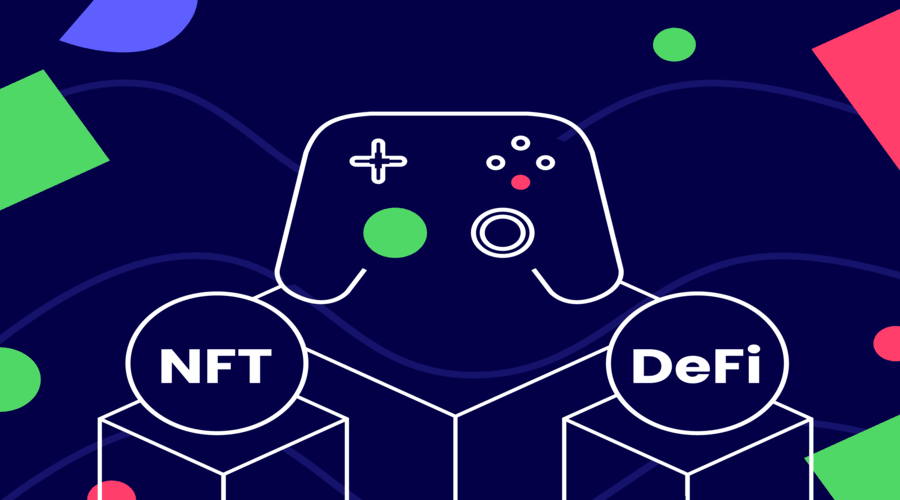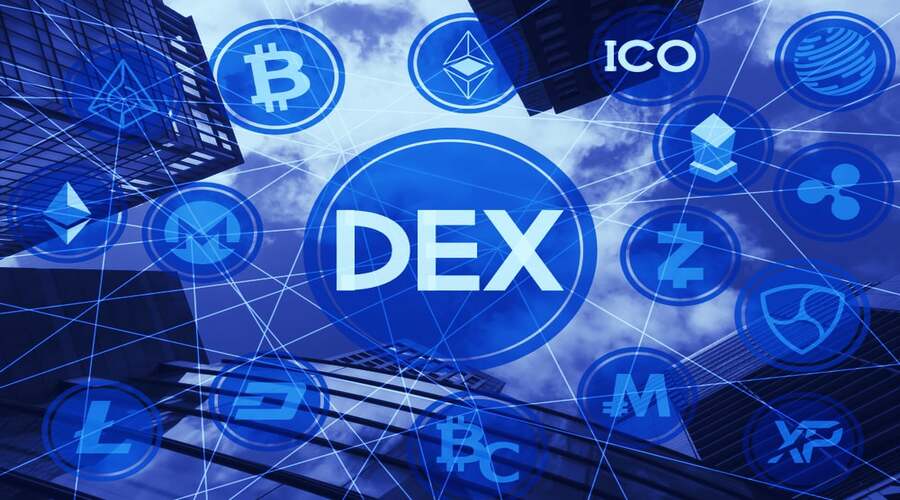The rise of non-fungible tokens (NFTs) has brought about significant changes in the digital landscape, and their impact on decentralized finance (DeFi) cannot be ignored. NFTs have revolutionized the way we perceive ownership and value in the digital world, and their interoperability within DeFi ecosystems has opened up a realm of possibilities. In this article, we will explore the concept of NFT interoperability and its profound impact on the world of decentralized finance.
Understanding NFTs
NFTs, or non-fungible tokens, are unique digital assets that represent ownership or proof of authenticity of a specific item or piece of content. Unlike cryptocurrencies such as Bitcoin or Ethereum, which are fungible and interchangeable, each NFT is distinct and cannot be replicated. NFTs utilize blockchain technology to provide transparency, security, and immutability to the digital assets they represent.
NFTs, or non-fungible tokens, are unique digital assets that represent ownership or proof of authenticity of a specific item or piece of content. Unlike cryptocurrencies such as Bitcoin or Ethereum, which are fungible and interchangeable, each NFT is distinct and cannot be replicated. NFTs utilize blockchain technology to provide transparency, security, and immutability to the digital assets they represent.
These digital assets can encompass a wide range of items, including artwork, collectibles, virtual real estate, in-game items, music, videos, and more. Each NFT is associated with a specific identifier that verifies its uniqueness and ownership. This identifier is stored on the blockchain, making it publicly verifiable and tamper-proof.
NFTs have gained significant attention and popularity due to their ability to establish true ownership and scarcity in the digital realm. They enable creators and artists to monetize their digital creations and provide collectors with a way to own and trade unique digital assets. The value of an NFT is determined by factors such as its desirability, rarity, historical significance, and the reputation of the creator.
As the NFT market continues to grow and evolve, the potential applications and possibilities for NFTs are expanding, creating new avenues for creativity, ownership, and investment in the digital world.
Decentralized Finance (DeFi)
Decentralized finance, or DeFi, refers to the utilization of blockchain technology and smart contracts to create a decentralized financial ecosystem. DeFi aims to eliminate intermediaries, increase financial inclusivity, and provide users with greater control over their assets. DeFi protocols enable various financial activities such as lending, borrowing, trading, and yield farming, all within a decentralized and permissionless environment.
Decentralized finance, or DeFi, refers to the utilization of blockchain technology and smart contracts to create a decentralized financial ecosystem. Unlike traditional finance that relies on centralized intermediaries such as banks or financial institutions, DeFi aims to provide an open, transparent, and permissionless alternative.
In the DeFi space, various financial activities can be conducted without the need for intermediaries, such as lending, borrowing, trading, and yield farming. Smart contracts, which are self-executing agreements coded on the blockchain, automate and enforce the terms of these financial transactions. This eliminates the need for trust in a centralized authority and enables individuals to have direct control over their assets.
DeFi protocols are built on blockchain platforms like Ethereum, Binance Smart Chain, or Solana, and they allow users to interact with financial services using digital assets. These protocols are typically open-source, meaning anyone can participate in the ecosystem by providing liquidity, borrowing funds, or creating new financial products and services.
DeFi has the potential to revolutionize traditional finance by providing greater accessibility, inclusivity, and financial sovereignty. It enables individuals from all over the world to access financial services without the need for traditional banking infrastructure. With DeFi, users can retain control over their funds, earn interest on their assets, and participate in innovative financial opportunities in a trustless and decentralized manner.

The Promise of NFT Interoperability
NFT interoperability refers to the seamless transfer and interaction of NFTs across different platforms, blockchains, and applications. This interoperability unlocks a multitude of benefits for both NFT creators and users within the DeFi space.
The promise of NFT interoperability lies in the ability to seamlessly transfer and interact with non-fungible tokens (NFTs) across different platforms and blockchains. Interoperability opens up a world of opportunities and benefits for NFT creators, collectors, and users within the decentralized finance (DeFi) ecosystem.
Firstly, interoperability enhances liquidity in the NFT market. Previously, NFTs were often confined to specific platforms or marketplaces, limiting their potential audience and trading volume. With interoperability, NFTs can be bought, sold, and traded across multiple platforms, attracting a larger pool of buyers and increasing overall market activity.
Secondly, interoperability expands investment opportunities within DeFi. NFT collectors can diversify their portfolios by acquiring assets from different platforms and blockchains, each offering unique and valuable digital creations. This cross-platform investment potential allows individuals to explore a wider range of NFT categories, such as artwork, virtual real estate, or collectibles, potentially leading to increased returns on investment.
Additionally, NFT interoperability enables the use of these digital assets as collateral within DeFi lending and borrowing protocols. NFT owners can leverage their assets to obtain loans or generate yield by locking them into smart contracts. This innovation unlocks liquidity for NFT holders, allowing them to access capital without parting with their valuable digital assets.
Moreover, interoperability breaks down barriers between different blockchain networks, fostering collaboration, and cross-pollination of ideas, resources, and user bases. Developers can build applications that utilize NFTs from multiple platforms, enhancing creativity, innovation, and user engagement within the DeFi ecosystem.
In conclusion, NFT interoperability holds the promise of enhanced liquidity, expanded investment opportunities, collateralization of assets, and cross-platform compatibility within the decentralized finance landscape. As interoperability evolves and becomes more widely adopted, it has the potential to reshape the NFT market and create new avenues for value creation and digital asset ownership.
Enhanced Liquidity
By enabling NFTs to move freely between different platforms and blockchains, interoperability enhances liquidity in the NFT market. Previously, NFTs were often limited to specific marketplaces or platforms, which restricted their potential audience and liquidity. With interoperability, NFTs can be bought, sold, and traded across various platforms, attracting a larger pool of buyers and creating a more vibrant market.
Expanding Investment Opportunities
NFT interoperability also expands investment opportunities within the DeFi ecosystem. Investors can diversify their portfolios by acquiring NFTs from different platforms and blockchains, each offering unique and valuable digital assets. This cross-platform investment potential allows individuals to explore a wider range of collectibles, artwork, virtual real estate, and other digital assets, potentially increasing their investment returns.
Collateralizing NFTs
Interoperability enables the use of NFTs as collateral within DeFi lending and borrowing protocols. NFT owners can leverage their digital assets to obtain loans or generate yield by locking them into smart contracts. This innovation unlocks liquidity for NFT holders, as they can access capital without selling their valuable digital assets.
Cross-Platform Compatibility
NFT interoperability breaks down barriers between different blockchain networks and platforms, allowing for seamless interaction. This compatibility promotes collaboration and cross-pollination of ideas, resources, and user bases. Developers can build applications that utilize NFTs from multiple platforms, enhancing creativity and fostering innovation within the DeFi ecosystem.
Challenges and Considerations
- Technical Standards: Different blockchain networks and platforms may have varying technical standards for NFTs, making interoperability complex. Standardization efforts, such as the ERC-721 and ERC-1155 standards on Ethereum, are crucial to ensure smooth interoperability and seamless asset transfer across platforms.
- Security Risks: Interoperability introduces potential security risks as NFTs move between platforms. It becomes crucial to maintain the integrity and security of the digital assets during the transfer process. Robust security measures, such as encryption and authentication protocols, need to be implemented to mitigate these risks.
- Scalability: As NFTs gain popularity and more users engage with them, scalability becomes a significant consideration. The increasing volume of transactions and interactions between NFTs on different platforms can strain the underlying blockchain networks. Scalability solutions, such as layer 2 protocols or blockchain interoperability protocols like Polkadot or Cosmos, are being developed to address these challenges.
- User Experience: NFT interoperability should aim to provide a seamless and user-friendly experience. Users should be able to easily transfer, trade, and interact with NFTs across platforms without facing unnecessary complexities or technical barriers. Improving the user interface and streamlining the interoperability process is vital to encourage wider adoption.
- Economic Implications: Interoperability has economic implications, including pricing consistency and value preservation across platforms. Ensuring fair and transparent pricing mechanisms for NFTs, as well as maintaining the value and authenticity of digital assets during the transfer, is essential for user trust and the overall stability of the NFT market.
In addressing these challenges and considerations, the NFT and DeFi communities can work together to develop robust solutions that enhance the interoperability of NFTs, promote security and scalability, improve user experience, and foster the growth and sustainability of the broader decentralized finance ecosystem.
The Future of NFT Interoperability
The future of NFT interoperability holds immense potential. As blockchain technology continues to evolve, we can expect increased standardization, improved security measures, and enhanced scalability. This will pave the way for a seamless and interconnected NFT ecosystem within the broader DeFi landscape.
Conclusion
NFT interoperability has revolutionized decentralized finance by expanding liquidity, creating investment opportunities, collateralizing assets, and promoting cross-platform compatibility. The seamless transfer and interaction of NFTs between different platforms and blockchains have unlocked a new level of innovation and value creation. As the NFT and DeFi sectors continue to evolve, interoperability will play a pivotal role in shaping the future of digital ownership and financial ecosystems.
FAQs
1. Can NFTs from one blockchain be used on another blockchain? Yes, with NFT interoperability, NFTs can be transferred and used across different blockchains.
2. How does NFT interoperability benefit NFT creators? NFT interoperability expands the audience and market for NFT creators, increasing the potential value and exposure of their digital assets.
3. Can NFTs be used as collateral for loans? Yes, NFT interoperability allows NFT owners to collateralize their assets within DeFi lending and borrowing protocols.
4. What are the challenges of NFT interoperability? Technical standards and security and scalability concerns are among the challenges associated with NFT interoperability.
5. What does the future hold for NFT interoperability? The future of NFT interoperability looks promising, with increased standardization, improved security measures, and enhanced scalability on the horizon.




